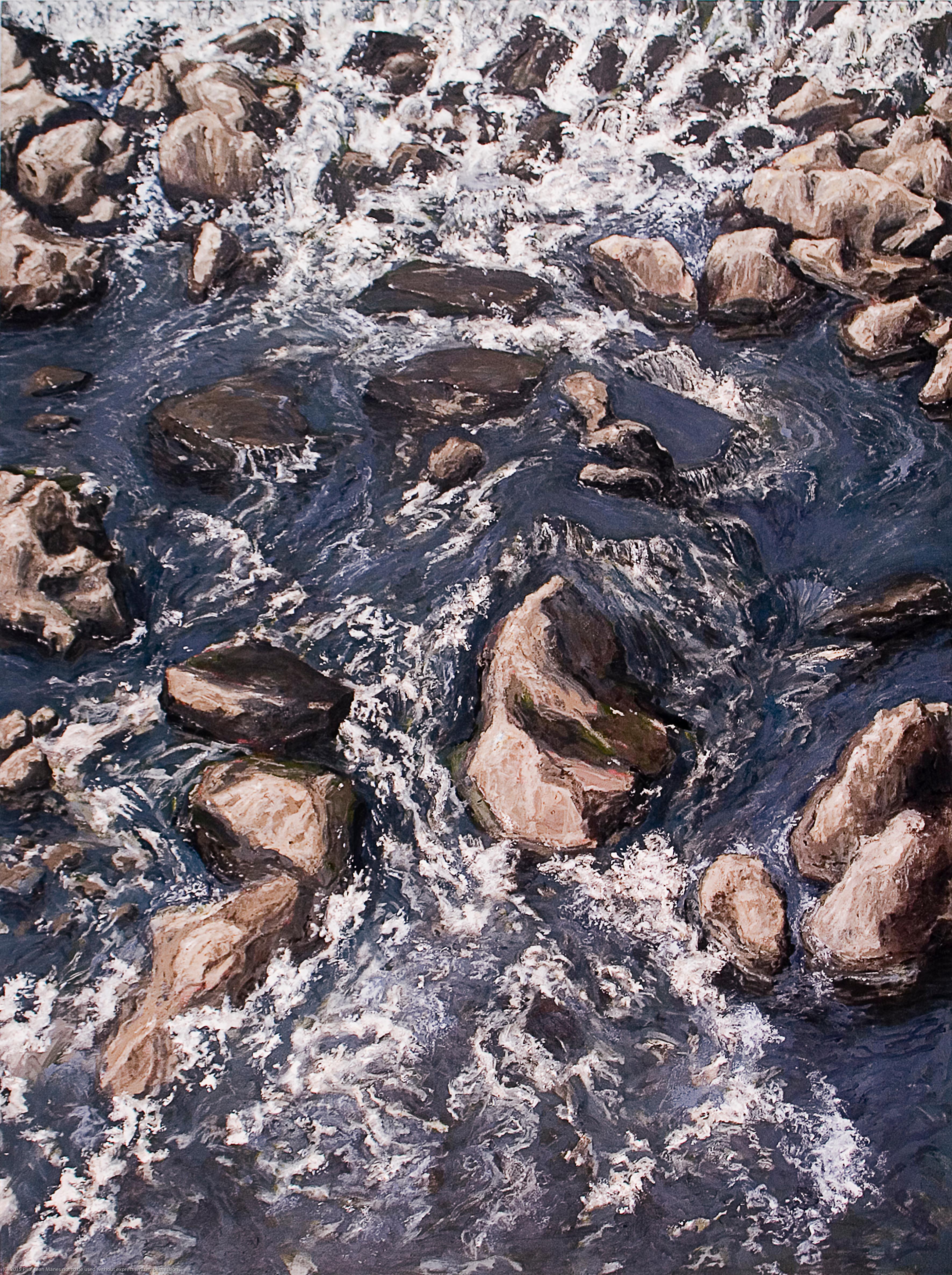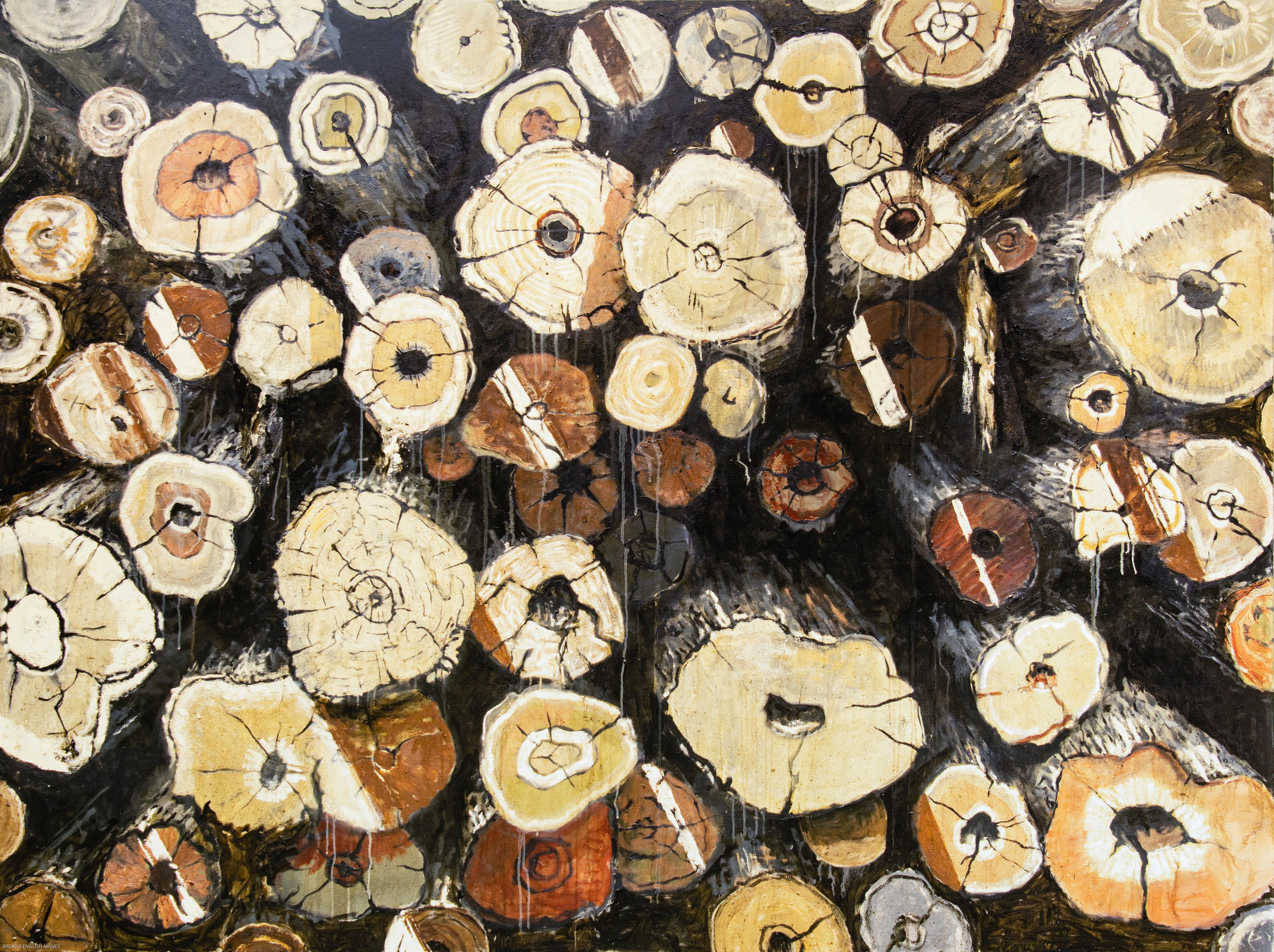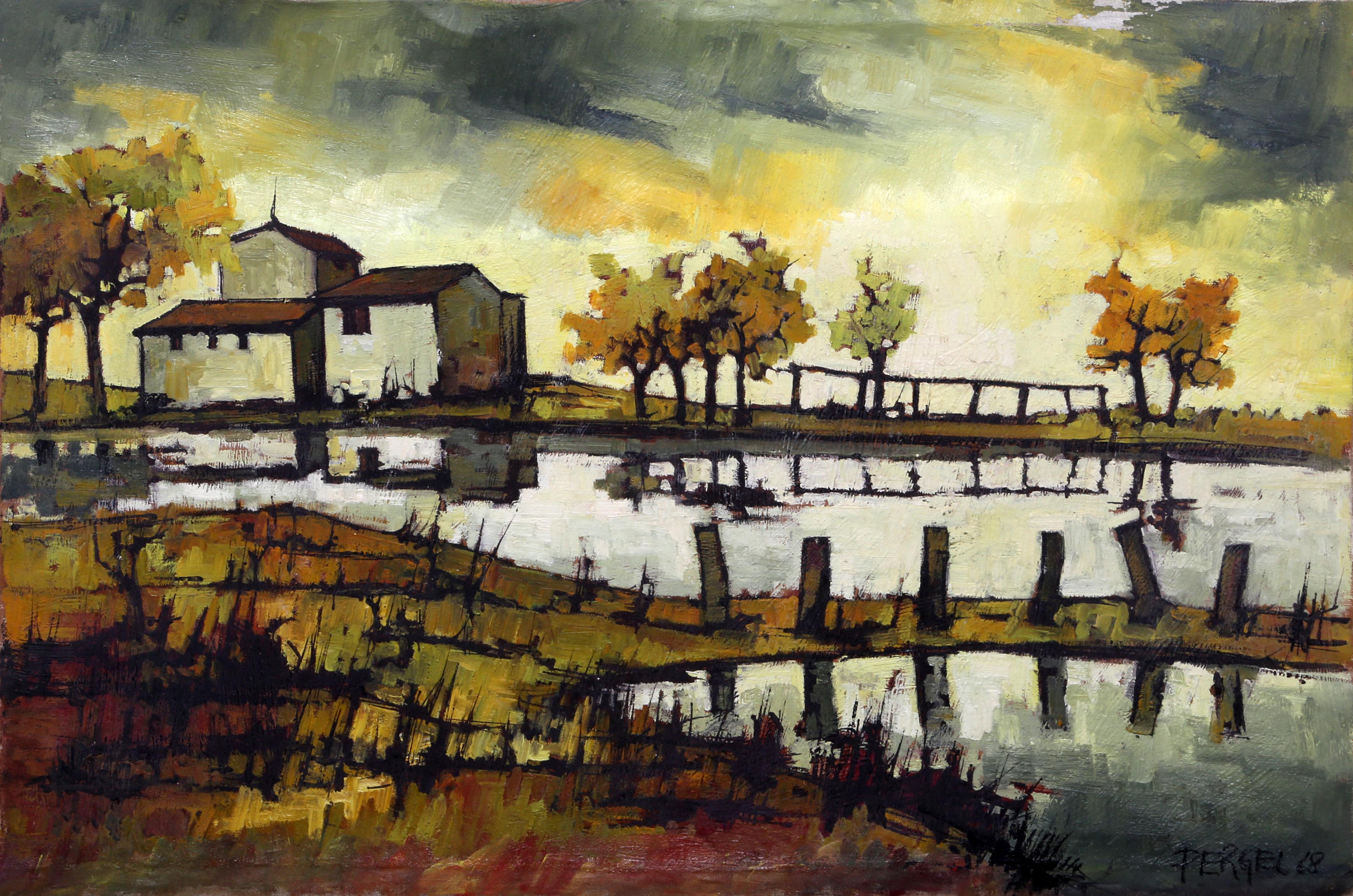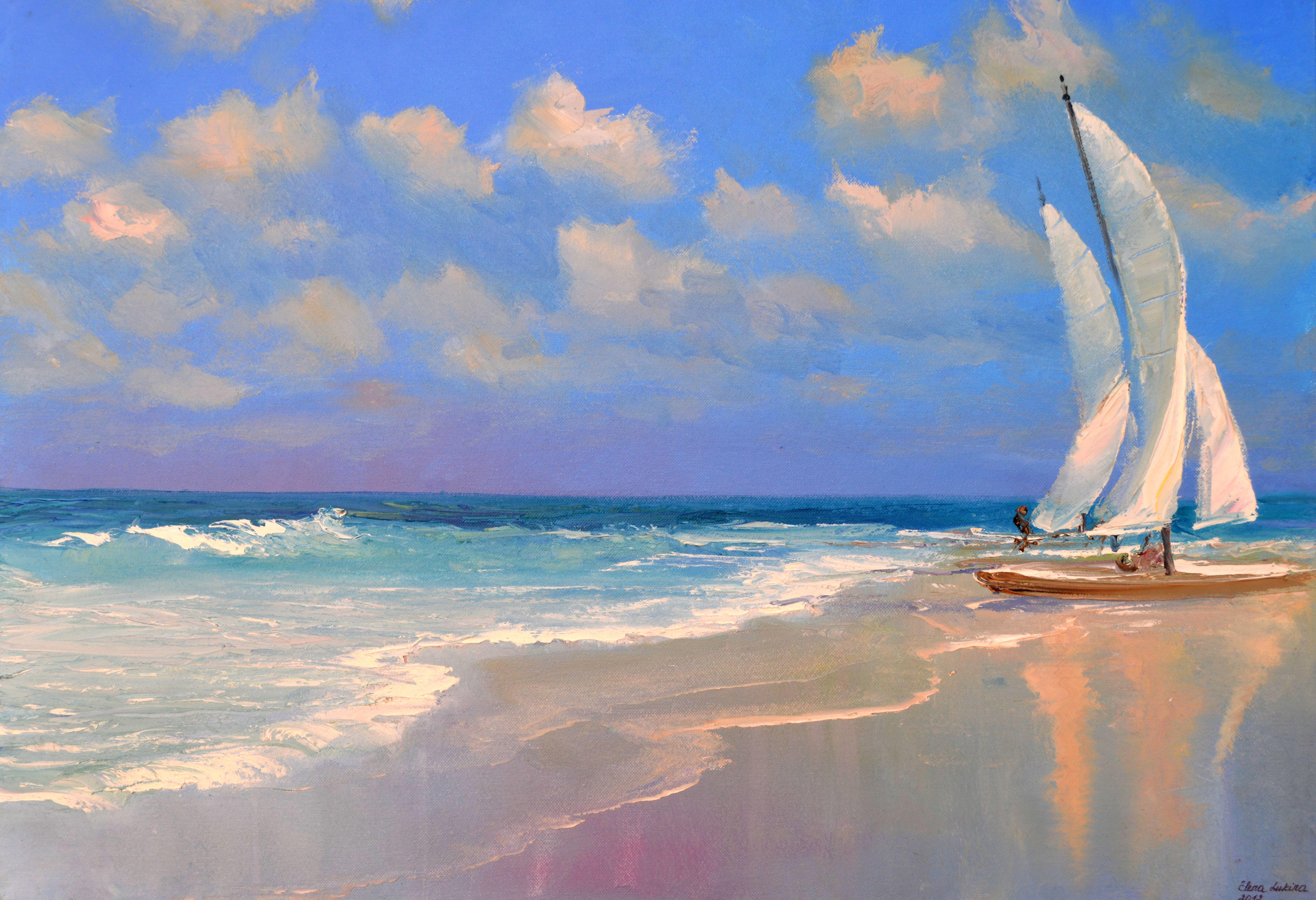Harry Leith-Ross"Misty January"c. 1918
c. 1918
About the Item
- Creator:Harry Leith-Ross (1886-1973, American)
- Creation Year:c. 1918
- Dimensions:Height: 26 in (66.04 cm)Width: 30 in (76.2 cm)
- Medium:
- Period:
- Condition:
- Gallery Location:Lambertville, NJ
- Reference Number:
Harry Leith-Ross
Son of an English father and a Dutch mother, Harry Leith-Ross was born in the British Colony of Mauritius, an island in the Indian Ocean thousand miles off the southeast coast of Africa. His first formal art instruction began in England under Stanhope Forbes, followed by studies with Jean-Paul Laurens at the Académie Julian in Paris. Leith-Ross came to the United States to enroll at the National Academy of Design in New York City in 1910, and then to Woodstock, in 1913. It was in Woodstock at the Art Students League, under the tutelage of L. Birge Harrison and John F. Carlson, that Leith-Ross would receive the training that most influenced his career as an artist. There, he formed a lifelong friendship with fellow artist, John Folinsbee. The two artists shared a studio during this time and participated in several joint exhibitions exclusively featuring their work, including an exhibit at the Louis Katz Art Gallery in New York City in 1915. During the First World War, Leith-Ross served in the U.S. infantry, and upon his release, spent a summer painting in England. While there, he participated in a solo exhibition at The Little Gallery in Worthing in 1919. It was said of Leith-Ross by an art critic in a local English newspaper: “An exquisite sense of color, perfect draftsmanship, a thorough grasp of composition and a deep insight into nature, make Harry Leith-Ross not only a brilliant painter but a poet”. Upon returning to the United States, Leith-Ross resided once again in Woodstock where he taught painting. Leith-Ross would often visit his close friend, John Folinsbee, who moved to New Hope in 1916 following his marriage to Ruth Baldwin Folinsbee. Leith-Ross was the best man at his wedding. Some years later, Leith-Ross met Emily, and the couple married in 1925. They remained in Woodstock until purchasing a home in the Jericho Valley on the outskirts of New Hope in 1936, where Leith-Ross remained until the end of his life. He painted a wide array of subjects. His earlier works (1912–30) are very finely painted impressionist landscapes consisting of small, tight brush strokes and a colorful refreshing palette. The early paintings usually depict Woodstock, New Hope and Gloucester. His later works often include figures and his application of paint is lighter. His skillful handling of shadows and light give the later works (1935–60) a striking resemblance to those of Edward Hopper. Many of these paintings depict the landscape surrounding his home in Jericho Valley and the views of New England. Leith-Ross was also a gifted watercolorist. He made occasional trips to Europe and often summered in Rockport and Gloucester, where he held painting classes as well. He exhibited widely and won more than 40 awards. He participated in exhibitions at the National Academy of Design, the Salmagundi Club, the Pennsylvania Academy of the Fine Arts, the Society of Independent Artists, the Corcoran Gallery Biennials, the Carnegie Institute, the Art Institute of Chicago, the American Watercolor Society and the Metropolitan Museum of Art.
- ShippingRetrieving quote...Ships From: Lambertville, NJ
- Return PolicyThis item cannot be returned.
- "Spring, Oakview"By Antonio Pietro MartinoLocated in Lambertville, NJJim’s of Lambertville is proud to offer this artwork by: Antonio Pietro Martino (1902 - 1988) Signed and dated lower right. Complemented by a period frame. Antonio Martino was ...Category
1920s American Impressionist Landscape Paintings
MaterialsCanvas, Oil
- "Summer Splendor"By Gershon BenjaminLocated in Lambertville, NJJim’s of Lambertville is proud to offer this artwork by: Gershon Benjamin (1899 - 1985) An American Modernist of portraits, landscapes, still lives, and the urban scene, Gershon ...Category
1970s Modern Landscape Paintings
MaterialsCanvas, Oil
- "Sunlit House, Centre Bridge"By Clarence Raymond JohnsonLocated in Lambertville, NJJim's of Lambertville Fine Art Gallery is proud to present this piece by Clarence Raymond Johnson (1894 - 1981). Clarence Johnson was an important New Hope School Impressionist painter who was active from 1917 until 1935. Born in Ohio, Johnson began his studies at the Columbus Art School. He then came to the Pennsylvania Academy of the Fine Arts where he studied under Daniel Garber, Emil Carlsen, and Cecilia Beaux...Category
1920s American Impressionist Landscape Paintings
MaterialsCanvas, Oil
- "Grand Canyon"By Gershon BenjaminLocated in Lambertville, NJJim’s of Lambertville is proud to offer this artwork by: Gershon Benjamin (1899 - 1985) An American Modernist of portraits, landscapes, still lives, and the urban scene, Gershon ...Category
20th Century Modern Landscape Paintings
MaterialsCanvas, Oil
- "The Canal"By Edward Willis RedfieldLocated in Lambertville, NJJim’s of Lambertville is proud to offer this artwork. Signed lower left. Complemented by a hand carved and gilt frame. Illustrated in "Edward Redfield: Just Values and Fine Seeing" by Constance Kimmerle and the Pennsylvania Academy of the Fine Arts's Exhibition of Paintings by Edward Redfield (April 17 to May 16, 1909) brochure Edward Willis Redfield (1869 - 1965) Edward W. Redfield was born in Bridgeville, Delaware, moving to Philadelphia as a young child. Determined to be an artist from an early age, he studied at the Spring Garden Institute and the Franklin Institute before entering the Pennsylvania Academy from 1887 to 1889, where he studied under Thomas Anshutz, James Kelly, and Thomas Hovenden. Along with his friend and fellow artist, Robert Henri, he traveled abroad in 1889 and studied at the Academie Julian in Paris under William Bouguereau and Tony Robert-Fleury. While in France, Redfield met Elise Deligant, the daughter of an innkeeper, and married in London in 1893. Upon his return to the United States, Redfield and his wife settled in Glenside, Pennsylvania. He remained there until 1898, at which time he moved his family to Center Bridge, a town several miles north of New Hope along the Delaware River. Redfield painted prolifically in the 1890s but it was not until the beginning of the twentieth century that he would develop the bold impressionist style that defined his career. As Redfield’s international reputation spread, many young artists gravitated to New Hope as he was a great inspiration and an iconic role model. Edward Redfield remained in Center Bridge throughout his long life, fathering his six children there. Around 1905 and 1906, Redfield’s style was coming into its own, employing thick vigorous brush strokes tightly woven and layered with a multitude of colors. These large plein-air canvases define the essence of Pennsylvania Impressionism. By 1907, Redfield had perfected his craft and, from this point forward, was creating some of his finest work. Redfield would once again return to France where he painted a small but important body of work between 1907 and 1908. While there, he received an Honorable Mention from the Paris Salon for one of these canvases. In 1910 he was awarded a Gold Medal at the prestigious Buenos Aires Exposition and at the Panama-Pacific Exposition of 1915 in San Francisco, an entire gallery was dedicated for twenty-one of his paintings. Since Redfield painted for Exhibition with the intent to win medals, his best effort often went into his larger paintings. Although he also painted many fine smaller pictures, virtually all of his works were of major award-winning canvas sizes of 38x50 or 50x56 inches. If one were to assign a period of Redfield’s work that was representative of his “best period”, it would have to be from 1907 to 1925. Although he was capable of creating masterpieces though the late 1940s, his style fully matured by 1907 and most work from then through the early twenties was of consistently high quality. In the later 1920s and through the 1930s and 1940s, he was like most other great artists, creating some paintings that were superb examples and others that were of more ordinary quality. Redfield earned an international reputation at a young age, known for accurately recording nature with his canvases and painting virtually all of his work outdoors; Redfield was one of a rare breed. He was regarded as the pioneer of impressionist winter landscape painting in America, having few if any equals. Redfield spent summers in Maine, first at Boothbay Harbor and beginning in the 1920s, on Monhegan Island. There he painted colorful marine and coastal scenes as well as the island’s landscape and fishing shacks. He remained active painting and making Windsor style furniture...Category
Early 1900s American Impressionist Landscape Paintings
MaterialsCanvas, Oil
- "In Port"By Edward Willis RedfieldLocated in Lambertville, NJJim’s of Lambertville is proud to offer this artwork by: Edward Willis Redfield (1869 - 1965) Edward W. Redfield was born in Bridgeville, Delaware, moving to Philadelphia as a young child. Determined to be an artist from an early age, he studied at the Spring Garden Institute and the Franklin Institute before entering the Pennsylvania Academy from 1887 to 1889, where he studied under Thomas Anshutz, James Kelly, and Thomas Hovenden. Along with his friend and fellow artist, Robert Henri, he traveled abroad in 1889 and studied at the Academie Julian in Paris under William Bouguereau and Tony Robert-Fleury. While in France, Redfield met Elise Deligant, the daughter of an innkeeper, and married in London in 1893. Upon his return to the United States, Redfield and his wife settled in Glenside, Pennsylvania. He remained there until 1898, at which time he moved his family to Center Bridge, a town several miles north of New Hope along the Delaware River. Redfield painted prolifically in the 1890s but it was not until the beginning of the twentieth century that he would develop the bold impressionist style that defined his career. As Redfield’s international reputation spread, many young artists gravitated to New Hope as he was a great inspiration and an iconic role model. Edward Redfield remained in Center Bridge throughout his long life, fathering his six children there. Around 1905 and 1906, Redfield’s style was coming into its own, employing thick vigorous brush strokes tightly woven and layered with a multitude of colors. These large plein-air canvases define the essence of Pennsylvania Impressionism. By 1907, Redfield had perfected his craft and, from this point forward, was creating some of his finest work. Redfield would once again return to France where he painted a small but important body of work between 1907 and 1908. While there, he received an Honorable Mention from the Paris Salon for one of these canvases. In 1910 he was awarded a Gold Medal at the prestigious Buenos Aires Exposition and at the Panama-Pacific Exposition of 1915 in San Francisco, an entire gallery was dedicated for twenty-one of his paintings. Since Redfield painted for Exhibition with the intent to win medals, his best effort often went into his larger paintings. Although he also painted many fine smaller pictures, virtually all of his works were of major award-winning canvas sizes of 38x50 or 50x56 inches. If one were to assign a period of Redfield’s work that was representative of his “best period”, it would have to be from 1907 to 1925. Although he was capable of creating masterpieces though the late 1940s, his style fully matured by 1907 and most work from then through the early twenties was of consistently high quality. In the later 1920s and through the 1930s and 1940s, he was like most other great artists, creating some paintings that were superb examples and others that were of more ordinary quality. Redfield earned an international reputation at a young age, known for accurately recording nature with his canvases and painting virtually all of his work outdoors; Redfield was one of a rare breed. He was regarded as the pioneer of impressionist winter landscape painting in America, having few if any equals. Redfield spent summers in Maine, first at Boothbay Harbor and beginning in the 1920s, on Monhegan Island. There he painted colorful marine and coastal scenes as well as the island’s landscape and fishing shacks. He remained active painting and making Windsor style furniture...Category
Early 1900s American Impressionist Landscape Paintings
MaterialsCanvas, Oil
- Paul Manes - Tagus, Painting 2006By Paul ManesLocated in Greenwich, CTPaul Manes was born May 4, 1948 in Austin, Texas. He began his professional career in New York City in the early 1980s. His art has been widely exhibited in America and Europe and hi...Category
2010s Contemporary Landscape Paintings
MaterialsCanvas, Paint, Oil
- Paul Manes - Untitled - Logs, Painting 2021By Paul ManesLocated in Greenwich, CTPaul Manes was born May 4, 1948 in Austin, Texas. He began his professional career in New York City in the early 1980s. His art has been widely exhibited in America and Europe and hi...Category
2010s Contemporary Landscape Paintings
MaterialsCanvas, Oil
- House on the Water, Oil Painting by Jacques PergelLocated in Long Island City, NYArtist: Jacques Pergel, French Title: House on the Water Year: 1968 Medium: Oil on Canvas, signed and dated lower right Size: 24 x 36 in. (60.96 x 91.44...Category
1960s Modern Landscape Paintings
MaterialsOil, Canvas
- Summer, sea, beachLocated in Zofingen, AGIn this oil painting, I've captured a serene moment where tranquility and the vast expanse of the sea converge. The subject's contemplative pose, her gaze cast towards the shimmering...Category
2010s Expressionist Landscape Paintings
MaterialsCanvas, Oil
- Sea. SailboatLocated in Zofingen, AG"In this oil painting, I've infused the canvas with the tranquil yet invigorating spirit of the sea. The sailboat, a focal point, carries within it a sense of adventure and freedom. ...Category
2010s Expressionist Landscape Paintings
MaterialsCanvas, Oil
- My eveningLocated in Zofingen, AGIn this piece, I've poured my soul into capturing the tranquil interplay of light on water as the day whispers to a close. The thick oil paints give life to the vivid hues and soft g...Category
2010s Expressionist Landscape Paintings
MaterialsCanvas, Oil




